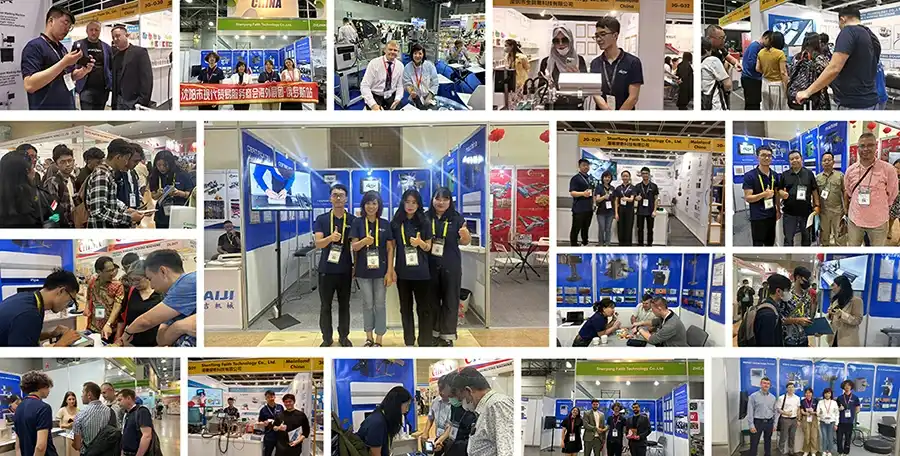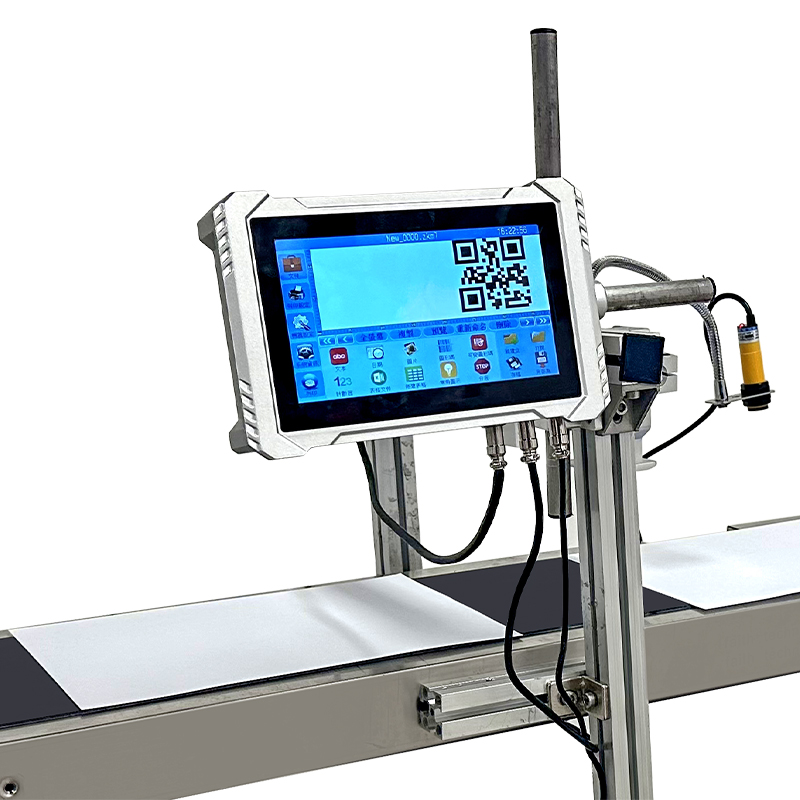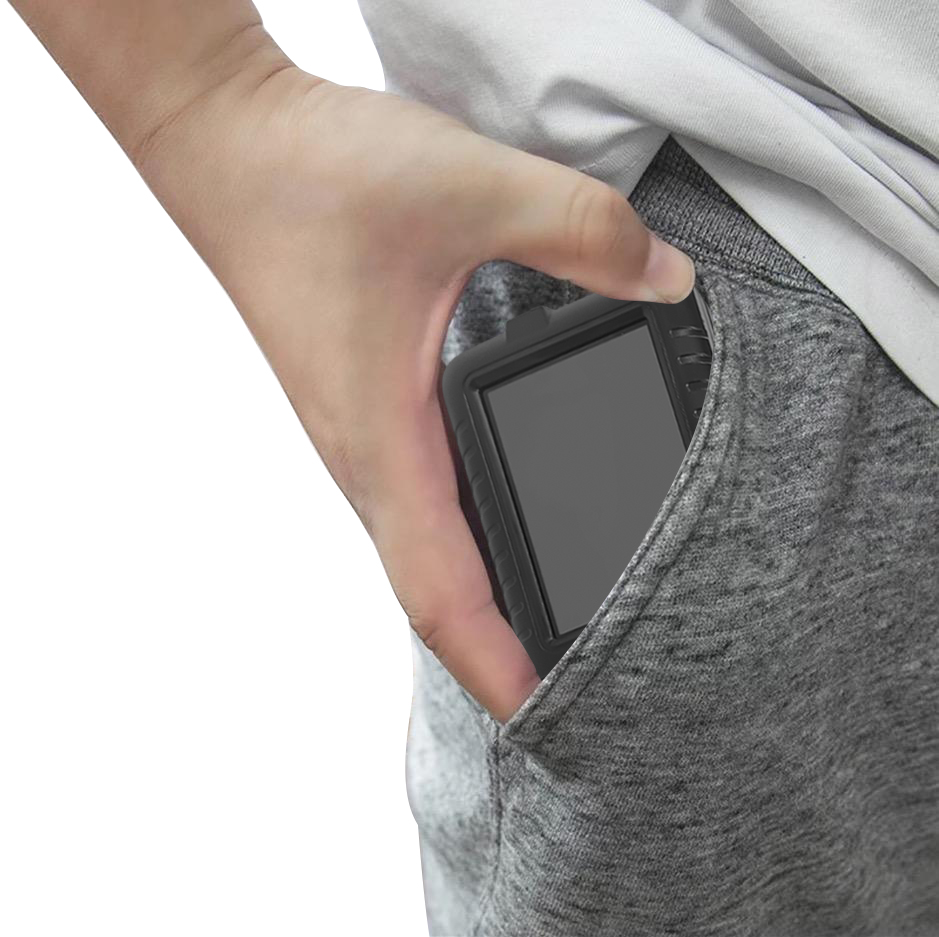Why Industrial CIJ Printing Systems Are Revolutionizing Manufacturing?
Industrial Continuous Inkjet (CIJ) printing systems are transforming the manufacturing landscape by offering unparalleled speed, flexibility, and reliability. These advanced frameworks excel in printing variable information such as batch numbers, expiry dates, and serial numbers, making them crucial for industries requiring product traceability and compliance. By combining high-speed printing capabilities with the ability to mark on different materials and surfaces, CIJ technology is enabling producers to streamline operations, reduce costs, and meet evolving showcase requests. The integration of CIJ printers with Industry 4.0 technologies advances their impact, empowering real-time data management and smart manufacturing forms that are revolutionizing production over various segments.
The Technological Marvels Behind CIJ Printing Systems
Understanding the CIJ Printing Process
At the heart of industrial CIJ printing systems lies a fascinating technological process that enables high-speed, non-contact printing on various surfaces. The CIJ technology operates on a simple yet ingenious principle: it generates a continuous stream of tiny ink droplets that are electrically charged and then precisely deflected onto the printing surface.
The process begins with a high-pressure pump forcing ink through a microscopic nozzle, creating a steady jet of liquid. This jet is then broken into uniformly sized and spaced droplets by a piezoelectric crystal that vibrates at a specific frequency. As these droplets form, they pass through an electrode that imparts an electrical charge to each one.
The charged droplets then pass through an electrostatic field created by deflection plates. Depending on the desired print pattern, some droplets are allowed to pass straight through to the substrate, while others are deflected into a gutter for recirculation. This selective deflection process occurs at incredibly high speeds, allowing for rapid and precise printing.
Advancements in Ink Formulations
The evolution of ink formulations has played a crucial role in expanding the capabilities of industrial CIJ printing systems. Modern inks are engineered to adhere to a wide range of materials, including plastics, metals, glass, and even porous surfaces. These specialized formulations ensure that prints remain clear and durable throughout a product's lifecycle, resisting fading, smudging, and environmental factors.
Manufacturers like Shenyang Faith Technology Co., Ltd. offer a diverse palette of ink colors, including black, red, blue, green, white, and even invisible inks for security applications. Each ink type is tailored to meet specific industry requirements, such as high-temperature resistance for automotive parts or food-grade compliance for packaging.
Moreover, the development of quick-drying and low-odor inks has further enhanced the efficiency of CIJ systems, allowing for immediate handling of printed products and improving workplace conditions. The continuous innovation in ink technology continues to push the boundaries of what's possible with CIJ printing, opening up new applications across various industries.
Software and Control Systems
The software and control systems that drive industrial CIJ printing systems are equally impressive, offering unparalleled flexibility and ease of use. Modern CIJ printers feature intuitive user interfaces that allow operators to quickly create, edit, and manage print templates. These interfaces often support multiple languages and can be customized to suit specific production environments.
Advanced control systems enable real-time monitoring of print quality, ink usage, and system performance. They can automatically adjust printing parameters to maintain consistency across long production runs and varying environmental conditions. Many systems also incorporate predictive maintenance algorithms that can alert operators to potential issues before they cause downtime.
Integration capabilities are another key feature of modern CIJ software. These systems can seamlessly connect with enterprise resource planning (ERP) systems, manufacturing execution systems (MES), and other production line equipment. This integration allows for automated data population of print fields, ensuring accuracy and reducing the risk of human error in coding and marking processes.
Transformative Impact on Manufacturing Processes
Enhancing Production Efficiency
Industrial CIJ printing systems have become a cornerstone of efficient manufacturing processes across various sectors. The high-speed printing capabilities of these systems, which can reach up to 576m/min as seen in models like the FBP002, allow production lines to operate at peak efficiency without compromising on print quality or accuracy.
This remarkable speed is particularly beneficial in high-volume production environments where even minor delays can significantly impact output. By keeping pace with the fastest production lines, CIJ printers eliminate bottlenecks that could otherwise occur at the coding and marking stage. This seamless integration ensures that product identification and traceability requirements are met without slowing down the overall manufacturing process.
Moreover, the versatility of CIJ technology in printing on various surfaces and materials means that manufacturers can use a single system for multiple product lines. This flexibility reduces the need for multiple specialized printing solutions, streamlining equipment management and maintenance processes.
Improving Product Traceability and Compliance
In an era where product traceability and regulatory compliance are paramount, industrial CIJ printing systems offer invaluable capabilities. These systems excel at printing variable data such as batch numbers, production dates, expiration dates, and unique serial numbers with exceptional clarity and durability.
The ability to print high-quality, machine-readable codes (such as barcodes and QR codes) enables manufacturers to implement robust track-and-trace systems throughout their supply chains. This enhanced traceability not only aids in quality control and inventory management but also supports rapid and targeted product recalls if necessary, minimizing potential risks to consumers and brand reputation.
For industries subject to strict regulatory requirements, such as pharmaceuticals and food production, CIJ systems provide a reliable means of ensuring compliance with labeling regulations. The precision and consistency of CIJ printing ensure that critical information is always legible and accurate, helping manufacturers meet legal obligations and industry standards.
Facilitating Customization and Personalization
The adaptability of industrial CIJ printing systems has opened up new possibilities for product customization and personalization, a growing trend in many consumer markets. These systems allow for on-the-fly changes to printed content without interrupting the production process, enabling manufacturers to efficiently produce small batches or even individually customized items.
This capability is particularly valuable in industries where product variations are common, such as food and beverage manufacturing. CIJ printers can quickly switch between different product SKUs, printing appropriate barcodes, ingredient lists, and nutritional information without the need for time-consuming changeovers.
In the realm of consumer goods, the ability to add personalized messages, names, or unique identifiers to products during the manufacturing process creates opportunities for brands to offer customized products at scale. This level of personalization can significantly enhance the perceived value of products and strengthen customer engagement.
Future Trends and Innovations in CIJ Technology
Integration with Industry 4.0 and IoT
The future of industrial CIJ printing systems is closely intertwined with the broader trends of Industry 4.0 and the Internet of Things (IoT). As manufacturing facilities become increasingly connected and data-driven, CIJ printers are evolving to become integral components of smart factory ecosystems.
Advanced CIJ systems are now equipped with network connectivity features that allow them to communicate with other production line equipment and central management systems. This connectivity enables real-time monitoring of printer performance, remote diagnostics, and automated adjustments based on production data.
The integration of CIJ printers with IoT platforms is opening up new possibilities for predictive maintenance and optimization. By analyzing data from multiple printers across different production lines or even different facilities, manufacturers can identify patterns, predict potential issues, and optimize printer settings for maximum efficiency and print quality.
Sustainability and Eco-friendly Solutions
As environmental concerns continue to shape industrial practices, CIJ technology is evolving to meet the demand for more sustainable printing solutions. Innovations in this area focus on reducing the environmental impact of CIJ printing while maintaining its high performance and versatility.
One key area of development is in eco-friendly ink formulations. Manufacturers are investing in research to create inks that are low in volatile organic compounds (VOCs) and made from renewable resources. These new inks not only reduce the environmental footprint of printing operations but also improve workplace safety by minimizing harmful emissions.
Energy efficiency is another focus area, with newer CIJ printer models designed to consume less power during operation and standby modes. Some systems now incorporate energy recovery mechanisms that capture and reuse heat generated during the printing process, further reducing overall energy consumption.
Enhanced Automation and Artificial Intelligence
The integration of advanced automation and artificial intelligence (AI) technologies is set to further revolutionize industrial CIJ printing systems. These innovations promise to enhance the already impressive capabilities of Faith printers, making them even more efficient, accurate, and adaptable to complex manufacturing environments.
AI-powered vision systems are being developed to work in tandem with CIJ printers, enabling real-time quality control of printed codes and marks. These systems can automatically detect and flag printing errors, ensuring that every product leaves the production line with perfect, legible coding. Some advanced setups can even trigger automatic adjustments to printer settings to correct issues on the fly, minimizing waste and downtime.
Machine learning algorithms are being employed to optimize printer performance based on historical data and current operating conditions. These systems can predict maintenance needs, suggest optimal ink usage patterns, and even recommend the best print settings for different product types and environmental conditions.
FAQ
What types of industries benefit most from industrial CIJ printing systems?
Industrial CIJ printing systems are particularly beneficial for industries requiring high-speed, versatile, and reliable product coding and marking. This includes food and beverage, pharmaceuticals, cosmetics, automotive, electronics, and packaging industries. Any sector that needs to print variable data like expiration dates, batch numbers, or traceability codes on diverse materials can significantly benefit from CIJ technology.
How do CIJ printers compare to other industrial printing technologies?
Compared to other industrial printing technologies, CIJ printers offer several advantages. They provide non-contact printing, allowing marking on irregular surfaces. CIJ systems also offer high-speed printing capabilities and can print on a wide range of materials. While technologies like laser marking or thermal transfer may be preferred for specific applications, CIJ printers generally offer greater versatility and are often more cost-effective for high-volume, variable data printing needs.
Conclusion
Industrial CIJ printing systems have undeniably revolutionized manufacturing processes across various industries. Their ability to deliver high-speed, versatile, and reliable printing solutions has transformed product coding, marking, and traceability. As technology continues to evolve, we can expect even more innovative applications and improvements in CIJ printing, further solidifying its role as a crucial component in modern manufacturing.
For those looking to harness the power of industrial CIJ printing systems in their manufacturing processes, Shenyang Faith Technology Co., Ltd. offers cutting-edge solutions tailored to diverse industry needs. To learn more about China continuous inkjet printing wholesale and traceability system solutions can benefit your operations, please contact us at sale01@sy-faith.com.

References
1. Smith, J. (2022). "The Evolution of Industrial Printing: CIJ Technology at the Forefront." Journal of Manufacturing Innovation, 15(3), 145-160.
2. Johnson, A., & Williams, R. (2021). "Continuous Inkjet Printing in Industry 4.0: Challenges and Opportunities." International Journal of Advanced Manufacturing Technology, 89(5-8), 1723-1735.
3. Chen, L., et al. (2023). "Sustainability in Industrial Printing: A Comprehensive Review of CIJ Systems." Sustainable Production and Consumption, 30, 139-155.
4. Martinez, S. (2022). "Artificial Intelligence Applications in Industrial Coding and Marking." AI in Manufacturing, 7(2), 78-92.
5. Thompson, K. (2021). "The Impact of CIJ Printing on Global Supply Chain Traceability." Supply Chain Management Review, 25(4), 32-40.
Online Message
Learn about our latest products and discounts through SMS or email
_1732610504844.webp)


